INSIDE ISSUE 17.44 | Nov. 2, 2018
 NEWS: Some say it’s time to reevaluate efficacy of jail bonds
NEWS: Some say it’s time to reevaluate efficacy of jail bonds
BRIEFS: New poll highlight’s S.C.’s pre-election mood, more
CALENDAR: Tuesday is election day
COMMENTARY, Brack: Drop rhetorical frenzy and focus more on unity
SPOTLIGHT: Conservation Voters of South Carolina
MY TURN, Burgess: Vote no on amendment to appoint state superintendent of education
FEEDBACK: Send us your letters
MYSTERY PHOTO: The power of flowers
S.C. ENCYCLOPEDIA: Soybeans
NEWS: Some say it’s time to reevaluate efficacy of jail bonds
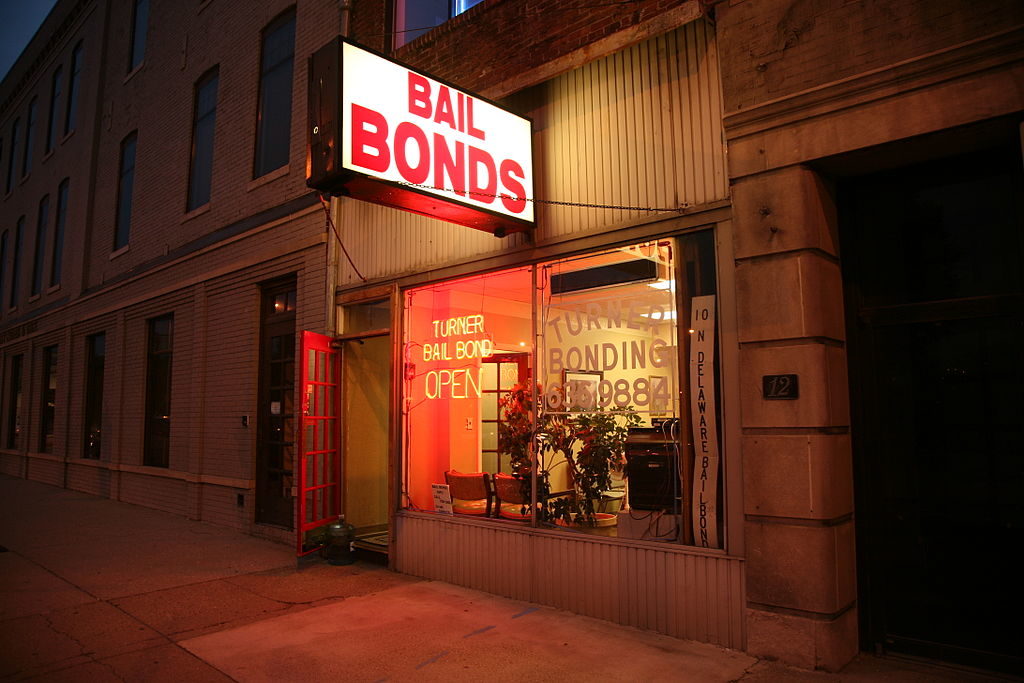
Nearly 9,000 people are incarcerated while awaiting trial in South Carolina and more than a third of detainees nationwide are unable to afford bond, according to the Pretrial Justice Institute.There are no statewide statistics on what their charges or the amount of bonds set at by judges, according to multiple sources contacted for this story, but several people in the law enforcement community say many are black, poor, and unable to post the few hundred dollars needed to get out of jail.
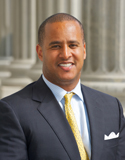
“The system is in dire need of change,” criminal defense attorney and S.C. Rep. Todd Rutherford told Statehouse Report.
But it has been four years since South Carolina lawmakers discussed how the state deals with pre-trial defendants. And that was a discussion on how to revoke bond for those with a history of repeated offenses. The proposed bill did not pass.
While other, typically more liberal states in the nation have moved toward reforming bond systems, the conversation appears to relegated to the local level in South Carolina. For example, Charleston County is two years into a grant-funded program that uses 14-data points to help judges screen defendants to determine whether to set a surety (cash) or personal recognizance (no cash) bond.
South Carolina Victim Assistance Network Executive Director Laura Hudson of Columbia said she’s against any effort to reduce the use of surety bonds, which she says creates accountability among those accused of crimes.
F for pretrial detention
In South Carolina, a pretrial defendant has a right to a personal recognizance bond (read: cashless bond) if he or she does not pose a flight risk or a danger to the community. But judges have broad discretion. Fourteenth Circuit Solicitor Duffie Stone of Beaufort County said he has seen bond set for as little as $500.
In a 2017 report card by Pretrial Justice Institute (PJI), South Carolina was given an F for pretrial detention. According to the report, 17.5 residents per 10,000 were detained pretrial.
More than a half million people are remain in jail while awaiting trial in the United States, according to Prison Policy Institute.
The PJI report said local communities spend at least $14 billion annually to detain those awaiting trial. Rutherford said Richland County spends $35 per inmate per day — or $12,775 per inmate per year. The operating costs of the jail, which include inmate expenses, are $7.9 million for the current fiscal year.
The report also found that men of color received higher bail amounts than white men for the same offenses, and that those who cannot afford bail are nearly four times as likely to receive a jail sentence that is up to three times longer than those who can afford bail.
Rutherford said that those awaiting a trial date in a detention center are also more likely to plead guilty to an offense, if only to pay a fine or serve their time so they can return to their jobs and family.
“That’s not theory. That’s not even speculation,” he said. “It happens all the time.”
‘Cashless bond’
A few states have implemented or proposed a system that moves toward a “cashless bond” system — which typically relies on data warehouses to help judges make decisions and eliminates cash bail for those defendants deemed “low-risk.” The states implementing these systems usually still allow money bail to be set for other defendants.
In late August, California became the first state to end cash bond entirely. Those that the court deems dangers to the community or flight risks remain in jail, while others are released while awaiting trial.
Virginia’s attorney general recently proposed eliminating bonds under $5,000 by using that state’s pretrial screening algorithm, and Kentucky is weighing its options on how to reform its bond system.
‘Make our system better’
The chairman of the Charleston County Criminal Justice Coordinating Council wants to be very clear: they are not utilizing or proposing a “cashless bond” system. For the last two years, the council has established a 14-point decision tree to help judges make better and more informed decisions under existing law, Mitch Lucas said.
“Everyone wants to make our system better,” the Charleston County assistant sheriff told Statehouse Report. “There’s three things at the end of the day the CJCC wants to make better and that is to make the criminal justice system more efficient, more effective and more equitable … We’ve got disproportionality and we know there is disparity.”
As of October, Charleston County has seen an 18 percent reduction in its local jail population since the Charleston Safety and Justice Challenge began. The challenge, which is funded through grants by the MacArthur Foundation, aims to reduce the jail population by 25 percent by May 2019. According to Charleston’s 2017 report on the program, personal recognizance bonds increased from an issuance rate of 27 percent in 2014 to 40 percent in 2017.
Lucas said the data that has been accumulated over two years is just now being put to work in the county. The pretrial screenings factor in employment, family and living situation.
“We’re trying to provide the bond setting judge more information so he can make a better, more informed decision,” Lucas said.
‘The prototype is there’
But Lucas was doubtful of a statewide application of the Charleston County system.
“You have to have local people who have to own it,” he said. But, he added, the model “is not that hard to do” and implement in other communities. Already, 52 other communities nationwide are participating in the Safety and Justice Challenge.
Also in the Lowcountry, Stone said he’d like state lawmakers to seriously consider bond reform. He said judges should always grant personal recognizance for those that are not flight risks or dangers to the community.
“Constitutionally, it requires it,” Stone said. He added that additional data like that used for sentencing in the 14th Circuit could be helpful in judges’ decision-making. “There is a need for a wholesale bond restructuring.”
However, he’d also like to see the state allow judges to deny bond to those that are dangers to the community, keeping them incarcerated until their trial.
On the state level, two lawmakers who have proposed sentencing reform — Rutherford and Republican Rep. Murrell Smith of Sumter — appear to differ on the need for bail reform in South Carolina.
Rutherford would like to see risk assessments like those employed in Charleston County implemented on the statewide level.
“The science is already there. The prototype is already there,” Rutherford said. “We have nothing like that.”
But Smith said whatever the state does should be balanced between bond reform and victims’ rights.
“There is no one size fits all for every case,” Smith said. He said a judge should always be able to decide how a pretrial defendant obtains release and added, “I don’t think it would alter much what we have right now.”
- Have a comment? Send to: feedback@statehousereport.com
NEWS BRIEFS
BRIEFS: New poll highlight’s S.C.’s pre-election mood, more
By Lindsay Street, Statehouse correspondent | A slight majority of respondents think the country is headed in the wrong direction, but that South Carolina is on the right track, according to a Winthrop Poll released this week.
 A poll of S.C. residents (not likely voters, there’s a difference) by Winthrop University found the most important problems facing the country are immigration, followed by racism, and politicians or government. Those surveyed said the most important issues facing the Palmetto State were, issues that keep cropping up: education, infrastructure, and jobs or unemployment.
A poll of S.C. residents (not likely voters, there’s a difference) by Winthrop University found the most important problems facing the country are immigration, followed by racism, and politicians or government. Those surveyed said the most important issues facing the Palmetto State were, issues that keep cropping up: education, infrastructure, and jobs or unemployment.
While the poll did not select for likely voters, it did ask respondents whether they approved of S.C. Gov. Henry McMaster. Respondents have increased their favorability rating for the incumbent Republican to 51 percent. McMaster is facing Democratic nominee S.C. Rep. James Smith in the Nov. 6 election.
As of end of October, Smith was still lagging behind McMaster in public and private polls, according to The Post and Courier. In a reliably red state, Smith has also had trouble getting name recognition among voters, according to media reports.
State lawmakers, like Smith, received a 46 percent approval rating from respondents.
Here are other findings from the October poll:
- #MeToo: Nearly half of poll respondents strongly disagreed that women who claim to be sexually harassed cause more problems than they solve, and nearly two out of three respondents strongly disagreed that sexual harassment in the workplace is no longer a problem in the United States. While nearly three-fourths strongly or somewhat agreed that most women who come forward about sexual harassment are telling the truth, nearly 80 percent said that innocent men have to be extra careful to be not accused of sexual harassment.
- Economy: About three-fourths of South Carolina respondents said the country’s economy is very good or fairly good, while the same number of respondents think the condition of the state’s economy is either very or fairly good. A large majority described their own financial situation as good or excellent and getting better.
- Climate change: Nearly half of respondents said climate change is happening and the cause is equally shared by humans and nature. About 30 percent said humans were the primary cause.
- Congress: 69 percent of respondents disapproved of Congress, but U.S. Sen. Lindsey Graham, R-South Carolina, received favorable ratings from Republican-leaning respondents.
- Kavanaugh: Half of respondents said they approve of U.S. Supreme Court Justice Brett Kavanaugh’s nomination and confirmation. The poll found that Kavanaugh supporters were less likely to agree that most women who report harassment are telling the truth, and more likely to agree that men must be careful to avoid false accusations.
- Trump: While President Donald Trump has a 44 percent approval rating in the Palmetto State, 83 percent of Republicans approve of the president.
In other news this week:
Mapping race block-by-block. Are you living in a gentrified area that was previously a black or Hispanic neighborhood? A new map through National Geographic allows you to see race in America, block-by-block, and also the previous racial history of that place. Click here to see.
Jail-to-work program. Our main story this week is about pretrial issues, but what about after jail-time? In an effort to prevent recidivism, Greenville Technical College is partnering with Greenville Detention Center on a workforce development program. The program allows inmates to earn job-specific certifications. Learn more here.
- Have a comment? Send to: feedback@statehousereport.com
LOOKING AHEAD: Tuesday is election day
 Staff reports | Did you know that South Carolina has an election on Tuesday? If you are a registered voter, you can vote absentee up until the day of the election by going to your nearby election office. Or you can go to your polling precinct on the day of the election, which is Tuesday.
Staff reports | Did you know that South Carolina has an election on Tuesday? If you are a registered voter, you can vote absentee up until the day of the election by going to your nearby election office. Or you can go to your polling precinct on the day of the election, which is Tuesday.
Did we mention that the election is Tuesday? Polls open at 7 a.m. and close at 7 p.m. on, you guessed it, Tuesday.
Need a good roundup of voting issues on Tuesday’s ballot? The State newspaper’s 2018 election guide for procrastinators and The Post and Courier’s S.C. voter’s guide are good places to start. Then pick up your local newspaper or look for your ballot online to see local questions.
Don’t forget to vote … Tuesday!
Click below for other items coming up in the Statehouse:
BRACK: Drop rhetorical frenzy and focus more on unity
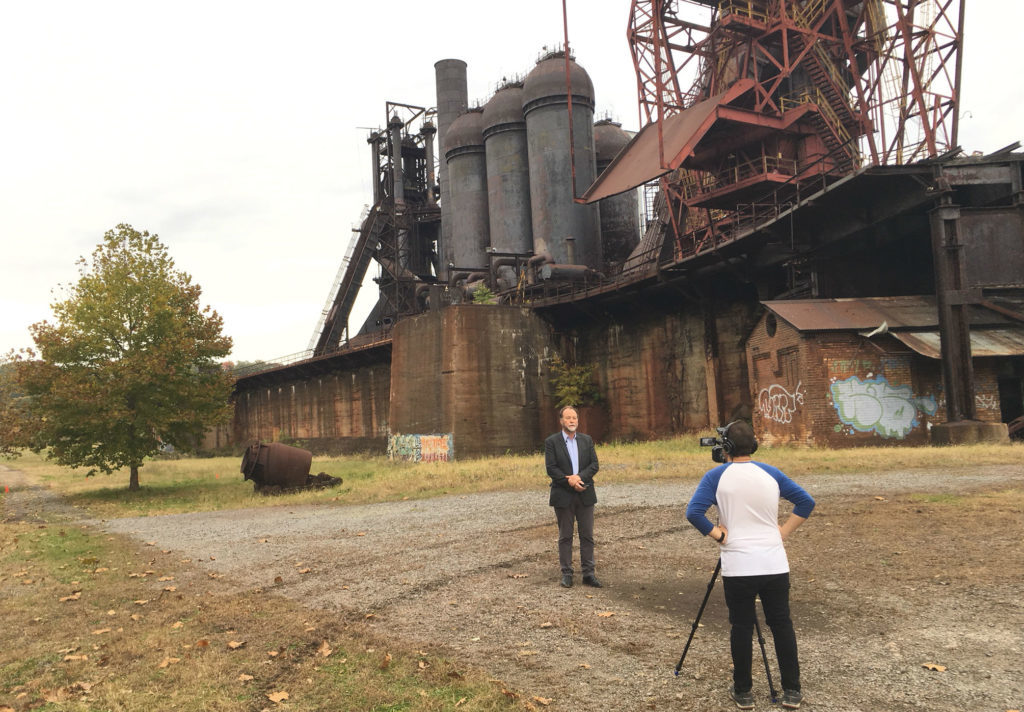
By Andy Brack, editor and publisher | The messages from a four-week tour across 10 states are loud and clear: The country is more divided than ever in modern history and the main issue in the midterm elections boils down to Donald Trump, which seems to be just the way he wants it.
On the whole, Trump supporters want to give the president more of a chance to shake things up despite economic risks. Farmers in Minnesota, for example, are willing for short-term pain if there is long-term gain. They are worried they may not have buyers for crops being stored in silos now because of a trade war in China, but they want the president to have more time to work a deal.
Meanwhile, Trump critics want to give the president a new Congress to put a check on him and his twitching twittering. And they’re energized more than ever to get out and vote in the midterm elections.
Here are several lessons learned in the listening trip across the country that will be used in a documentary called A Hard Road: Travels in Trump’s America.
Tone it down. The fiery rhetoric coming from Trump and Congress isn’t doing much to bring the country together, which is what the scores of people we talked with want. But it’s not only Trump’s shoot-from-the-hip tirades on Twitter, campaign speeches or impromptu interviews. It’s also all of the negative ads from all candidates and the nasty media retorts by Trump critics. Fanning the flames, too, are media that spread the viciousness of Republicans and Democrats. Voters want everyone to tone it down, even though that seems to be more daunting than past attempts at nuclear disarmament talks.
Find more unity. Perhaps one way to get things toned down is for leaders to work on issues where they really aren’t that far apart. There are bipartisan issues that offer paths to building trust and progress, such as ways for legal immigration to continue while protecting borders; investing in infrastructure to rebuild roads and blighted communities; and finding reasonable spending cuts to put a tourniquet on the nation’s bad habit of borrowing money.
Listen more. Leaders on both sides need to listen more to people throughout the country, not just consume media that supports their ideological bent. Many Trump supporters believe what the president is doing is responding to frustrations that have not been heard by leaders in years. While Trump may just be using their frustrations for political gain, his supporters believe he is listening — and that’s fueling his power. If more people listened, more would get done.
Media responsibility. We’re not a believer in so-called fake news. That phenomenon is nothing but people not accepting facts because they don’t like them. But a lot of what passes on cable news these days is more opinion than actual news. It’s infotainment offered to generate bigger ratings and more money for networks. Just as we want leaders to tone down their rhetorical spasms, the media need to report news and get rid of commentators who purportedly add context but really are spewing little more than partisan talking points. Side note: Maybe the media can stop bursting into a hyper-frenzy on every Trump tweet. This magnifies the impact. Why not start ignoring them?
It’s the economy. In Trump’s favor now — and probably why people are willing to cut him some slack — is the fact that the economy is rolling along and unemployment is low. If his gamble with higher tariffs doesn’t pay off, the political playing field could change quickly and Trump may find it harder to keep supporters, particularly when they wake up and realize all of the manufacturing jobs lost in the U.S. aren’t coming back because of technological innovation and automation. One historian, for example, told us it takes 10 percent of the manpower today to make the same amount of seill that it did in Pittsburgh’s heyday when tens of thousands of workers made half of the world’s supply. Today, the Pittsburgh area has just two working steel plants.
Trump has added a new, vitriolic layer to the American experiment with democracy. If Democrats win control of the House, they’d be well-advised to work on a unity agenda, not constantly do battle with the president.
- Have a comment? Send to: feedback@statehousereport.com.
SPOTLIGHT: Conservation Voters of South Carolina
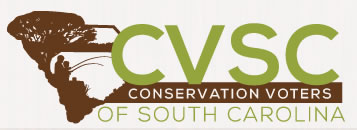 Conservation Voters of South Carolina is a statewide nonprofit organization that fights for the Palmetto State’s air, water, land and energy through political action. The organization is bipartisan, pragmatic and effective.
Conservation Voters of South Carolina is a statewide nonprofit organization that fights for the Palmetto State’s air, water, land and energy through political action. The organization is bipartisan, pragmatic and effective.BURGESS: Vote no on amendment to appoint state superintendent of education
By Gary Burgess Sr., special to Statehouse Report | The people of South Carolina should decide who the state superintendent of education will be. The governor of the state should not be given this far-reaching power.

The governor’s power has expanded to the point where numerous state
constitutional officers are no longer directly accountable to the people. Accountability to the people must continue to be the hallmark of this office which comprises the largest portion of the state’s budget. As a fiscal conservative, I believe accountability is imperative. The governors of South Carolina have been good politicians; nonetheless, a governor’s preference should never replace the voters’ voice at the ballot box.
Apparently, our current elected superintendent of education, Molly Spearman, questions herself; she supports this amendment to remove the vote of South Carolinians. She asserts, “When I decided to run, I checked the constitution to make sure I was qualified, and it turns out everybody is. (But) it requires a lot of skills and experience to run one of the largest agencies of state government and oversee 800,000 students.”
I do not support Superintendent Spearman’s liberal politics in running the office or her bullying of under resourced schools and districts, nor do I support her call for an ever-increasing education budget. Nonetheless, I do believe she possesses the skills to be superintendent of education. During my lifetime, all of the South Carolina state superintendents of education have been qualified.
My fellow South Carolinians, we are well-qualified to elect the state superintendent of education.
Vote No on Amendment 1!
Gary L. Burgess Sr., a Republican who lost in an eight-way 2014 GOP primary that included Spearman, is a member of the Anderson County Board of Education.
- Have a comment? Send it to: feedback@statehousereport.com.
FEEDBACK
Send us a letter
We love hearing from our readers and encourage you to share your opinions. But you’ve got to provide us with contact information so we can verify your letters. Letters to the editor are published weekly. We reserve the right to edit for length and clarity. Comments are limited to 250 words or less. Please include your name and contact information.
- Send your letters or comments to: feedback@statehousereport.com
MYSTERY PHOTO: The power of flowers
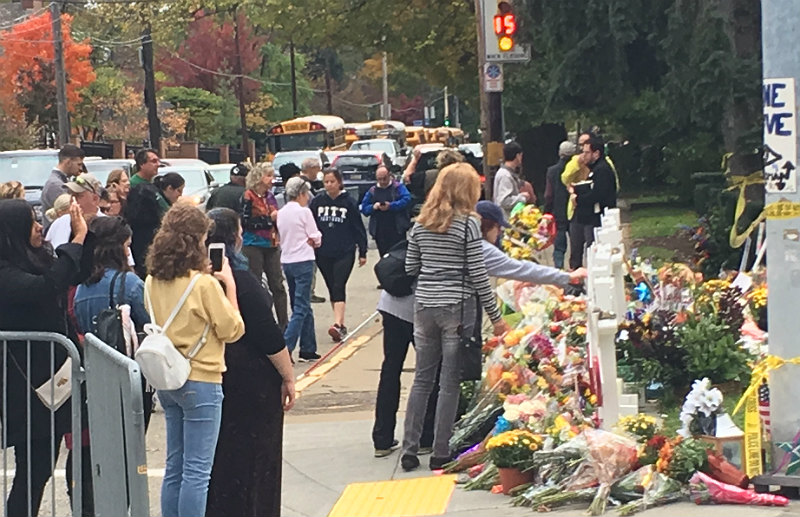
Here’s a clue on this week’s mystery: It’s not in South Carolina, but doesn’t it look familiar? What and where is it? Send your guess to: feedback@statehousereport.com. And don’t forget to include your name and the town in which you live.
Our previous Mystery Photo
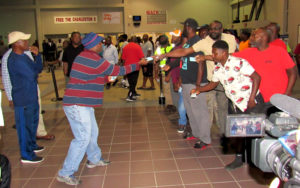 Our Oct. 26 mystery, One tough mystery, had a location that didn’t prove to be that tough, but no one correctly identified what was happening in the photo. The photo showed a hiring at the International Longshoremen’s Association union hall in Charleston.
Our Oct. 26 mystery, One tough mystery, had a location that didn’t prove to be that tough, but no one correctly identified what was happening in the photo. The photo showed a hiring at the International Longshoremen’s Association union hall in Charleston.
Hats off to three readers who knew the location: Mike LeFever and Trav Robertson, both of Columbia, and George Graf of Palmyra, Va.
Graf provided a little context: “The International Longshoremen’s Association, or ILA, is an historical and powerful black union in a state where other unions struggle to even exist. Local 1422 is in Charleston’s port. All jobs for unloading all of the shipping containers in the port of Charleston come through the union hall first, so union members arrive at the hiring hall to get work for the day, which is distributed in a chaotic way based on seniority.”
Send us a mystery: If you have a photo that you believe will stump readers, send it along (but make sure to tell us what it is because it may stump us too!) Send to: feedback@statehousereport.com and mark it as a photo submission. Thanks.
S.C. ENCYCLOPEDIA
HISTORY: Soybeans

S.C. Encyclopedia | An important cash crop widely grown in South Carolina, soybeans were first cultivated as a soil builder and animal fodder. Farmers simply broadcast the seeds and turned livestock into the fields to forage. In the early twentieth century, however, the famed agricultural scientist George Washington Carver discovered the high oil and protein content of soybeans and thus the crop’s greater market value. Recognizing the crop’s potential to free the state’s farmers from “King Cotton,” the agriculturalist John Edward Wannamaker worked to develop soybean varieties that would thrive in South Carolina.
Soybeans became a cash crop in South Carolina in the late 1940s. Farmers liked the crop’s low fertilizer requirements, soil-building character, and market strength. Moreover, soybeans are a good rotational crop and thus a good fit in both cotton and tobacco cultures. Beans could be planted in spring or early summer and harvested from October to December. The advent of reliable harvesting combines hastened the spread of soybean culture. As the crop could be planted, cultivated, and harvested entirely by machine, labor requirements were few. Low production costs coupled with increasing demand for a broad range of soy products afforded dependable profits for growers. By the early 1960s soybeans were an important part of the state’s agricultural economy. In some areas soybean acreage superseded cotton acreage.
South Carolina soybean production peaked in 1982 at 1.8 million acres. But rising costs of fuel, fertilizer, and equipment squeezed soy profits, while competing culture areas in the Midwest softened demand. Added to these trends was the declining real value of soybeans. In 2000 soybeans sold for about half their 1982 inflation-adjusted price. By the end of the twentieth century South Carolina soybean production had fallen to about 450,000 acres worth about $48 million to growers and ranked tenth in cash value to South Carolina farmers.
— Excerpted from an entry by Eldred E. Prince Jr. This entry hasn’t been updated since 2006. To read more about this or 2,000 other entries about South Carolina, check out The South Carolina Encyclopedia, published in 2006 by USC Press. (Information used by permission.)
ABOUT STATEHOUSE REPORT
Statehouse Report, founded in 2001 as a weekly legislative forecast that informs readers about what is going to happen in South Carolina politics and policy, is provided to you at no charge every Friday.
- Editor and publisher: Andy Brack, 843.670.3996
- Statehouse correspondent: Lindsay Street
More
Mailing address: Send inquiries by mail to: P.O. Box 22261, Charleston, SC 29407
Subscriptions are free: Click to subscribe.
We hope you’ll keep receiving the great news and information from Statehouse Report, but if you need to unsubscribe, go to the bottom of the weekly email issue and follow the instructions.
© 2018, Statehouse Report. All rights reserved.
















 We Can Do Better, South Carolina!
We Can Do Better, South Carolina!